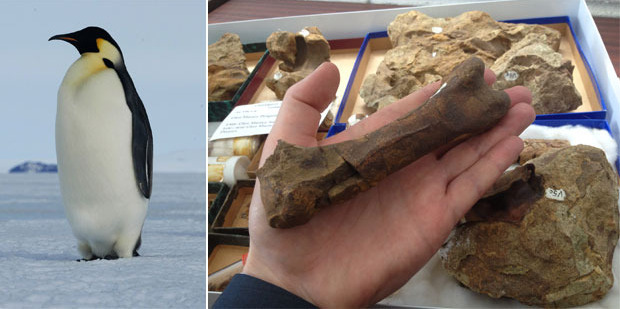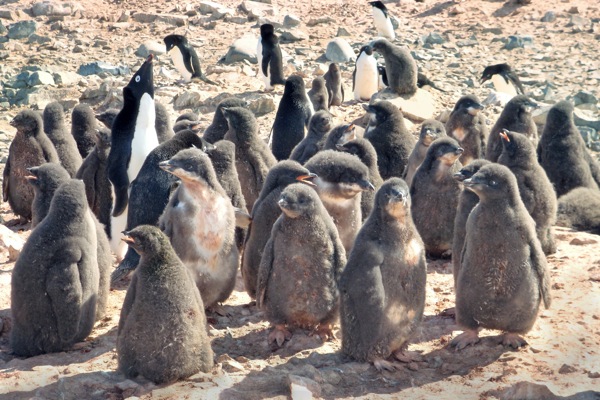- 19 December 2014 by Penny Sarchet

A take-off in tourism could open the door to new bird diseases (Image: Frans Lanting/National Geographic Creative)
For those who go, it's the trip of a lifetime – and
it wouldn't be complete without a selfie with penguins. But growing
tourism to the Antarctic, in combination with its warming climate, could
be placing penguins at a risk of infectious diseases.
Antarctic species are believed to have
weaker immune systems due to their long isolation from the world's
common pathogens. Humans only started visiting Antartica roughly 200
years ago.
Antarctica is no longer a stranger to human contact: more than 37,000 people visited the continent in the 2013-14 season
as part of a growing tourist industry, compared with an estimated 8000
just twenty years earlier. An additional 4400 researchers can be
accommodated simultaneously in Antarctica during peak months.
"The effects of both a growing tourism
industry and research presence will not be without consequences," says
Wray Grimaldi of the University of Otago in Dunedin, New Zealand.
"Penguins are highly susceptible to infectious diseases." She bases that
on a survey by her team of penguin diseases in captivity, reaching as
far back as 1947. It found reports of Salmonella, E. coli, West Nile virus and Avian pox virus infections, among others.
Widespread deaths
The team also found evidence of a number of
mass penguin mortality events across the Antarctic since 1969. A number
of infectious agents are implicated, including Avian pox, which killed
more than 400 gentoo penguins in 2006, and caused 60 per cent mortality
rates throughout another outbreak in 2008.
Grimaldi says disease agents may have
arrived in Antarctica via migrating birds like skuas or giant petrels,
although some pathogenic bacteria could have been introduced by humans.
There isn't enough evidence to test either possibility, she says.
Yet, as the climate warms, more birds are
expected to visit Antarctic regions, bringing their pathogens with them,
while diseases borne by other animals could expand their ranges
southwards.
But Norman Ratcliffe
of the British Antarctic Survey in Cambridge, UK, says there is not a
lot of evidence that wild penguin populations have been significantly
affected by disease, adding that the Antarctic's tourism industry has
been very active for 20 years and takes appropriate precautions.
"The tour companies are quite careful to
make sure everyone cleans their boots before they go ashore," he says.
"They don't allow any animal products to be taken ashore."
Warming warning
Grimaldi warns that climate change could help
drive the emergence of new penguin diseases in Antarctica. Claire
Christian of the Antarctic and Southern Ocean Coalition, a group of environmental NGOs, agrees.
"Climate change may result in a number of
stressors that make it more difficult for penguin populations to deal
with disease," she says. In addition to prompting the arrival of new
pathogens or species carrying pathogens, warming temperatures could have
a negative impact on food sources like krill, which might leave the
penguins less able to fight off illness, she adds.
"A coordinated monitoring system needs to
be in place," argues Grimaldi. "That way, responses can be directed by
science." Christian agrees, but she says research alone is not enough –
the countries that are signatories to the Antarctic Treaty also need to cooperate in implementing protective and precautionary measures.
Journal reference: Polar Biology, DOI: 10.1007/s00300-014-1632-5



























